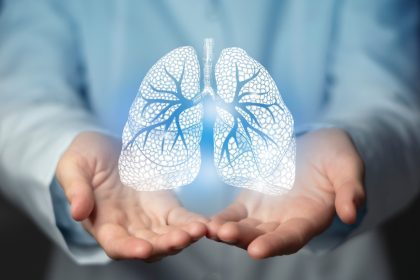The morning Jennifer Martinez headed to her regular spin class seemed like any other day. Within minutes of starting her workout, however, the 42-year-old marketing executive found herself in the back of an ambulance, fighting for breath. Her adult-onset asthma, diagnosed just two years earlier, had turned a routine exercise session into a life-threatening emergency.
“People think asthma is just a childhood condition, but that couldn’t be further from the truth,” says Dr. Sarah Reynolds, chief of pulmonology at Metropolitan Medical Center. “Adult asthma can be more dangerous because people often dismiss or underestimate their symptoms until it’s too late.”
The hidden dangers in your home
For Monica Chen, a 35-year-old teacher, the trigger wasn’t exercise – it was her weekly cleaning routine. “I never imagined that trying to keep my house dust-free would actually trigger a severe asthma attack,” she recalls. The combination of cleaning products and stirred-up allergens created the perfect storm for her respiratory system.
Dr. Reynolds explains that common household allergens pose a serious threat to adult asthma patients. “Your home should be your safe haven, but for many asthma sufferers, it’s filled with invisible triggers that can spark a crisis,” she says. Dust mites lurking in bedding, mold growing in damp bathrooms, and even beloved pets can transform a comfortable home into a dangerous environment.
When smoke signals danger
James Cooper learned this lesson the hard way at a friend’s outdoor barbecue. “Everyone was gathered around the grill, but the smoke started making my chest tight,” he remembers. “I didn’t want to make a scene, so I tried to tough it out.” That decision nearly cost him his life, resulting in an emergency room visit and a stern warning from his doctors.
Dr. Michael Thompson, director of respiratory care at Eastern Regional Hospital, emphasizes that smoke exposure, whether from cigarettes, grills, or fireplaces, can trigger immediate and severe reactions in adult asthma patients. “The particles in smoke can cause instant inflammation in the airways, leading to potentially fatal complications,” he warns.
The cold truth about winter
Winter brings its own set of challenges for adult asthma sufferers. Lisa Patterson discovered this during her morning jog on a crisp December day. “I’ve been running for years, but that cold air hit my lungs like a thousand needles,” she describes. Her experience highlights a common yet overlooked trigger that sends many adult asthma patients to emergency rooms during colder months.
“Cold air can cause the airways to constrict rapidly,” explains Dr. Reynolds. “Many adults don’t realize they need to modify their outdoor activities during winter months, even if they’ve been managing their asthma well in warmer weather.”
Exercise: The double-edged sword
The relationship between exercise and adult asthma creates a particularly challenging dilemma. Dr. David Klein, a sports medicine specialist at University Medical Center, sees many patients struggling to balance their fitness goals with asthma management.
“Physical activity is crucial for overall health, but adults with asthma need to approach exercise with careful planning,” Klein advises. “The key isn’t to avoid exercise altogether, but to understand how to exercise safely with asthma.”
The medication misconception
Perhaps the most dangerous oversight comes from what Dr. Reynolds calls “the medication misconception.” Many adults with asthma become complacent about their medication routine, especially when symptoms seem under control.
Sarah Williams, a 38-year-old attorney, admits she used to skip her preventive inhaler when she felt fine. “I thought I was being smart, saving medication for when I really needed it,” she says. “Then I had an attack during an important court presentation. Now I understand why consistent medication is crucial.”
The impact beyond breathing
The psychological toll of adult asthma often goes unrecognized. Dr. Rachel Foster, a clinical psychologist specializing in chronic illness, sees many patients struggling with anxiety about potential attacks. “The fear of having an asthma attack can be as debilitating as the physical symptoms,” she notes.
Breaking the cycle of triggers
Dr. Thompson emphasizes the importance of understanding personal trigger patterns. “Every adult asthma patient has unique triggers, but there are common themes we see repeatedly in emergency rooms,” he explains. His team has documented how seemingly harmless activities can cascade into serious medical emergencies.
Creating a safer environment
Environmental modifications play a crucial role in managing adult asthma. Dr. Emily Chen, an environmental health specialist, recommends specific changes to create asthma-friendly spaces. “It’s not about living in a bubble,” she explains. “It’s about making smart choices that reduce exposure to triggers while maintaining a normal life.”
The role of stress
Recent research has revealed another crucial factor in adult asthma management: stress. Dr. Foster points out that high-stress situations can exacerbate asthma symptoms, creating a dangerous cycle. “Many adults don’t realize that emotional stress can trigger physical symptoms, particularly with asthma,” she explains.
Technology and tracking
Modern technology has introduced new tools for managing adult asthma. Dr. Klein recommends various apps and devices that help patients monitor air quality, track symptoms, and maintain medication schedules. “Technology can be a powerful ally in preventing asthma emergencies,” he notes.
Looking ahead
The future of adult asthma management looks promising, according to Dr. Reynolds. New treatments and better understanding of triggers are helping patients lead fuller lives. However, she emphasizes that awareness and prevention remain crucial.
Taking control
For adults living with asthma, understanding and avoiding triggers is just the beginning. Dr. Thompson stresses the importance of having an action plan. “Every adult with asthma should have a clearly defined strategy for managing their condition, including knowing when to seek emergency care,” he advises.
The message from medical experts is clear: adult asthma requires constant vigilance and respect. By understanding and avoiding key triggers while maintaining proper medical management, adults with asthma can prevent many dangerous situations that lead to emergency room visits.
As Jennifer Martinez learned from her spin class experience, even seemingly safe activities can pose risks. Today, she exercises regularly but with proper precautions and medical supervision. “Living with adult asthma means being smart about your choices,” she reflects. “It’s not about living in fear, but about living with awareness.”














